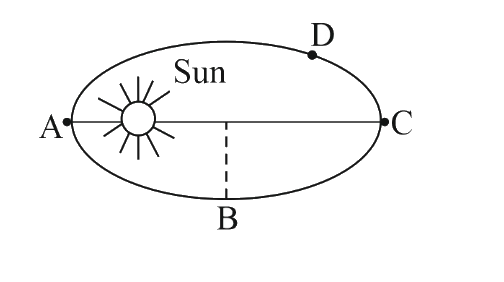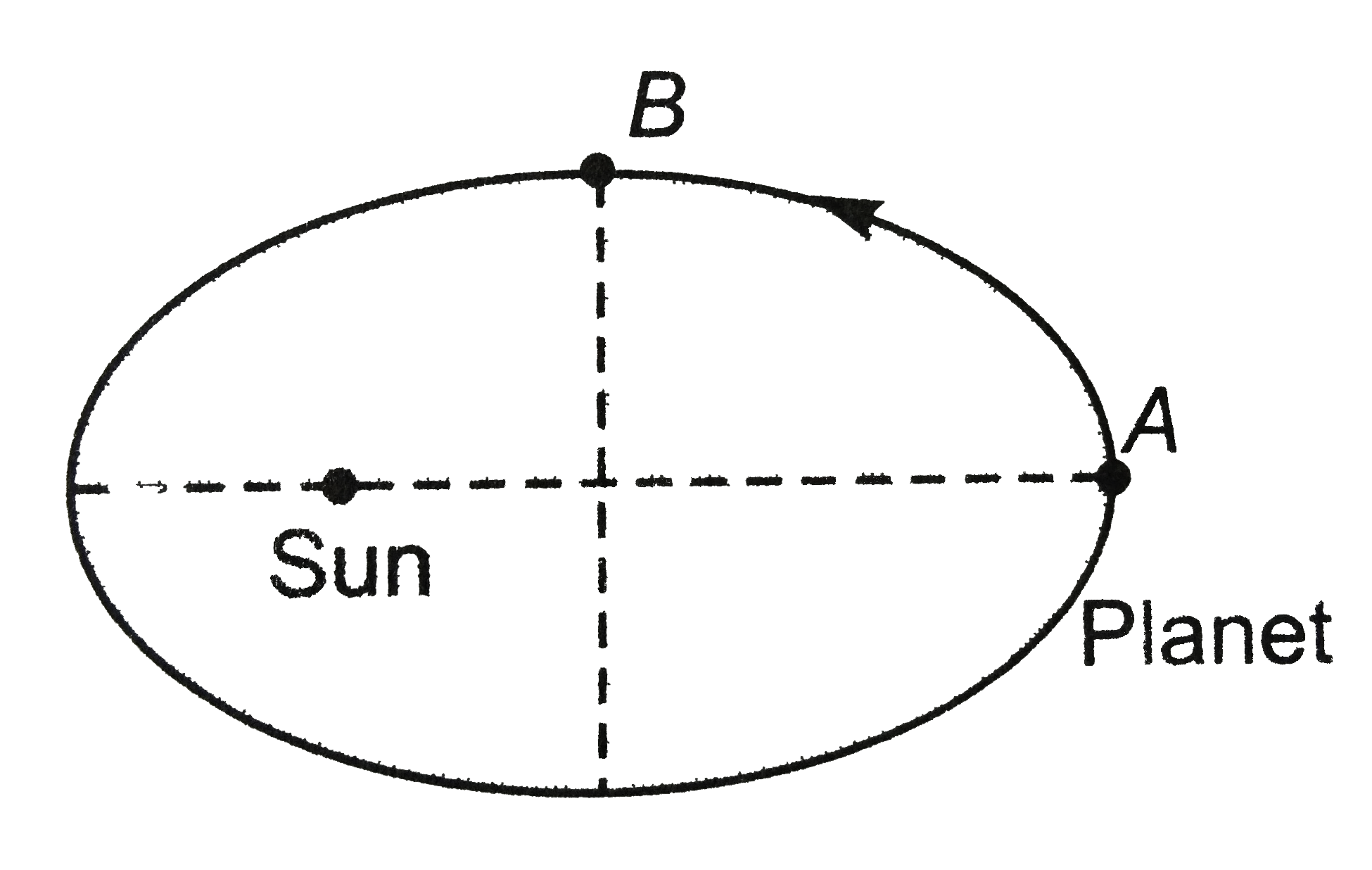A planet is revolving round the sun in an elliptical orbit, If v is the velocity of the planet when its position vector from the sun is r, then areal velocity of the planet is
|v×r|
2|r×v|
∣∣∣12(r×v)∣∣∣
None of these
The correct Answer is:C
To find the areal velocity of a planet revolving around the sun in an elliptical orbit, we can follow these steps:
Step 1: Understand Areal Velocity
Areal velocity is defined as the rate at which area is swept out by the position vector of the planet with respect to the sun. It can be expressed mathematically as:
Areal Velocity=dAdt
where dA is the area swept out in a small time interval dt.
Step 2: Relate Areal Velocity to Angular Momentum
The areal velocity can also be related to the angular momentum L of the planet. The formula for areal velocity A is given by:
A=Lm
where L is the angular momentum and m is the mass of the planet.
Step 3: Calculate Angular Momentum
The angular momentum L of the planet can be calculated using the formula:
L=m⋅r⋅v⊥
where v⊥ is the component of the velocity perpendicular to the position vector r.
Step 4: Determine the Perpendicular Velocity Component
In an elliptical orbit, the velocity v can be decomposed into two components: one along the radius vector r and one perpendicular to it. The perpendicular component v⊥ can be found using the relationship:
v⊥=v⋅sin(θ)
where θ is the angle between the position vector r and the velocity vector v.
Step 5: Substitute into Areal Velocity Formula
Substituting the expression for angular momentum into the areal velocity formula gives:
Areal Velocity=m⋅r⋅v⊥m=r⋅v⊥
Step 6: Final Expression for Areal Velocity
Thus, the final expression for the areal velocity of the planet is:
Areal Velocity=12r⋅v⋅sin(θ)
Summary
The areal velocity of the planet revolving around the sun in an elliptical orbit is given by:
Areal Velocity=12r⋅v⋅sin(θ)
Areal velocity is defined as the rate at which area is swept out by the position vector of the planet with respect to the sun. It can be expressed mathematically as:
Areal Velocity=dAdt
where dA is the area swept out in a small time interval dt.
The areal velocity can also be related to the angular momentum L of the planet. The formula for areal velocity A is given by:
A=Lm
where L is the angular momentum and m is the mass of the planet.
The angular momentum L of the planet can be calculated using the formula:
L=m⋅r⋅v⊥
where v⊥ is the component of the velocity perpendicular to the position vector r.
In an elliptical orbit, the velocity v can be decomposed into two components: one along the radius vector r and one perpendicular to it. The perpendicular component v⊥ can be found using the relationship:
v⊥=v⋅sin(θ)
where θ is the angle between the position vector r and the velocity vector v.
Substituting the expression for angular momentum into the areal velocity formula gives:
Areal Velocity=m⋅r⋅v⊥m=r⋅v⊥
Thus, the final expression for the areal velocity of the planet is:
Areal Velocity=12r⋅v⋅sin(θ)
The areal velocity of the planet revolving around the sun in an elliptical orbit is given by:
Areal Velocity=12r⋅v⋅sin(θ)
Topper's Solved these Questions
- BOOK - DC PANDEYCHAPTER - GRAVITATIONEXERCISE - (B) Chapter Exercises31videos
GRAVITATION
- BOOK - DC PANDEYCHAPTER - GRAVITATIONEXERCISE - (C) Chapter Exercises45videos
GRAVITATION
- BOOK - DC PANDEYCHAPTER - GRAVITATIONEXERCISE - Check Point 10.620videos
GRAVITATION
- BOOK - DC PANDEYCHAPTER - GENERAL PHYSICSEXERCISE - INTEGER_TYPE2videos
GENERAL PHYSICS
- BOOK - DC PANDEYCHAPTER - KINEMATICSEXERCISE - INTEGER_TYPE11videos
KINEMATICS
Similar Questions
Knowledge Check
- Question 1 - Select One
A planet of mass m is revolving round the sun (of mass Ms) in an elliptical orbit. If →v is the velocity of the planet when its position vector from the sun is →r, then areal velocity of the positon vector of the planet is :
A→v+→rB→r×→vC12(→v×→r)D12(→r×→v) - Question 2 - Select One
A planet is revolving round the sun in an elliptical orbit, If v is the velocity of the planet when its position vector from the sun is r, then areal velocity of the planet is
A12(→r×→v)B→r×→vC→v×→rD12(→v×→r) - Question 3 - Select One
The earth revolves round the sun in an elliptical orbit. Its speed
Agoes on decreasing continuouslyBgreatest when it is closest to the sunCgreatest when it is farthest from the sunDconstant at all the points on the orbit
A planet is revolving round the sun in an elliptical orbit as shown in figure. Select correct alternative(s)
View SolutionConsider a planet moving in an elliptical orbit around the Sun. The work done on the planet by the gravitational force of the Sun
View SolutionA planet is revolving around the Sun in an elliptical orbit. Its closest distance from the Sun is r and farthest distance is R. If the orbital velocity of the planet closest to the Sun is v, then what is the velocity at the farthest point?
View SolutionA planet is revolving round the sun in an elliptical orbit. Of the following the property which is a constant during the motion of the planet is :
View SolutionFor a planet revolving around Sun in an elliptical orbit, to obtain its velocity at any point we have to apply
View Solution



